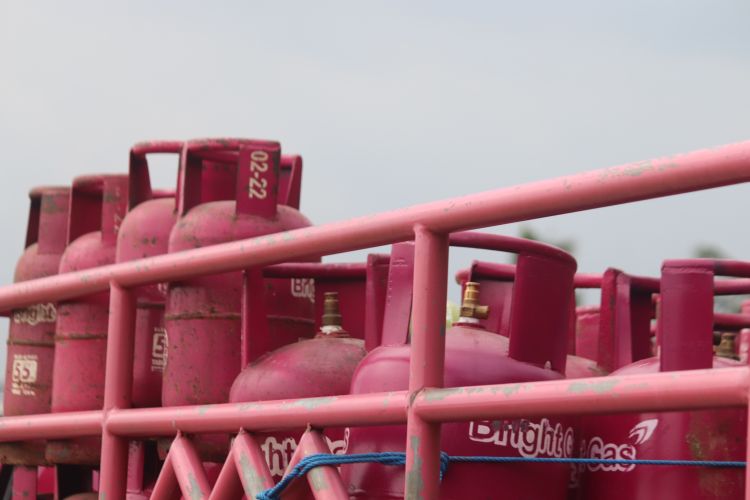
The government has approved a cut in the price of domestic LPG cylinders by Rs 200, just ahead of the upcoming poll season. This decision comes at a crucial juncture with the ruling BJP facing assembly elections in five states and the Lok Sabha election next year. Additionally, the Union Cabinet has given the green light for an extra subsidy under the Ujjwala scheme, which is being presented as a Rakshabandhan and Onam gift. This recent announcement brings the total subsidy to Rs 400 per cylinder for beneficiaries of the Pradhan Mantri Ujjwala Yojana (PMUY).
Under the Pradhan Mantri Ujjwala Yojana, the government is also planning to provide 75 lakh new gas connections, leading to a total of 10.35 crore beneficiaries under the scheme. Union Minister Anurag Thakur, the Union Minister, has stated that the additional subsidy of Rs 200 per LPG cylinder will result in a financial impact of Rs 7,680 crore for the fiscal year 2023-24. Currently, the cost of a domestic LPG cylinder is Rs 1,053 in Delhi, Rs 1,052.50 in Mumbai, Rs 1,068.50 in Chennai, and Rs 1,079 in Kolkata.
READ | Evergrande’s fall casts shadow over global economy
In a similar move last year, the government had announced a subsidy of Rs 200 per cylinder for Ujjwala beneficiaries, aimed at mitigating the effects of the high energy prices following Russia’s invasion of Ukraine. The budget allocated for LPG subsidies was Rs 6,100 crore for 2022-23 and Rs 7,680 crore for 2023-24.
However, the Opposition has criticised this action as a mere political manoeuvre. Assembly elections are scheduled in five crucial states – Rajasthan, Chhattisgarh, Madhya Pradesh, Telangana, and Mizoram – later this year, while Lok Sabha elections are due at the year’s end. The BJP-led NDA government at the Centre will seek a third five-year term in power.
The government contends that this step also intends to alleviate the impact of recent inflationary pressures, which have led to an increased cost of living. Nonetheless, political analysts had already foreseen such a move, as the government was expected to unveil new measures aimed at garnering voter support before the elections. In July 2023, India’s inflation reached a 15-month peak of 7.44%, largely due to soaring food prices.
Taming inflation by LPG price cuts
The persistent rise in food prices poses a threat to easing inflationary pressures. This concern prompted the Reserve Bank of India’s monetary policy committee to adopt a cautious approach during its August review. In the review, the central bank maintained the policy repo rate at 6.5% for the third consecutive policy meeting, citing ongoing concerns about inflation. Notably, this year’s surge in food prices was driven primarily by tomatoes, which experienced a staggering 400% increase in the past few months.
The risks associated with food prices persist due to the uncertain El Nino situation, volatile global food prices, and uneven distribution of the monsoon. Deputy Governor of RBI, Michael Patra, highlighted that India is grappling with multiple localised supply shocks, resulting in significant spikes in price-sensitive food items within the Consumer Price Index (CPI), consequently driving up overall inflation. In this context, the reduction in LPG cylinder costs could offer some relief to vulnerable PMUY beneficiaries. India currently has over 31 crore domestic LPG consumers, including 9.6 crore Ujjwala beneficiaries.
Oil subsidies, particularly in the form of gas subsidies, have been a focal point for successive governments over the years, given their role in domestic cooking options. While subsidies are well-intentioned in any society, the challenge with LPG subsidies lies in their concentration within urban areas, with 85% of beneficiaries hailing from urban locales. Within this segment, the majority fall under the middle, and high-income brackets. Consequently, the feasibility of implementing long-term LPG subsidies is questionable.
A dated article from the School of Economics underscores the friction arising from the lack of open competition in the marketing of LPG gas among private players and public sector units (PSUs). This lack of competition contributes to a lack of transparency in gas pricing.
A 2020 article by the Economics and Political Weekly (EPW), authored by Prodyumna Goutam, Rahul Lahoti, and Suchitra J Y, emphasizes the critical need for a comprehensive policy approach that focuses on rural areas. It remains uncertain whether LPG subsidies have effectively reached the intended beneficiaries. Furthermore, the government’s intentions must be demonstrated as genuine and not mere attempts to secure votes.

